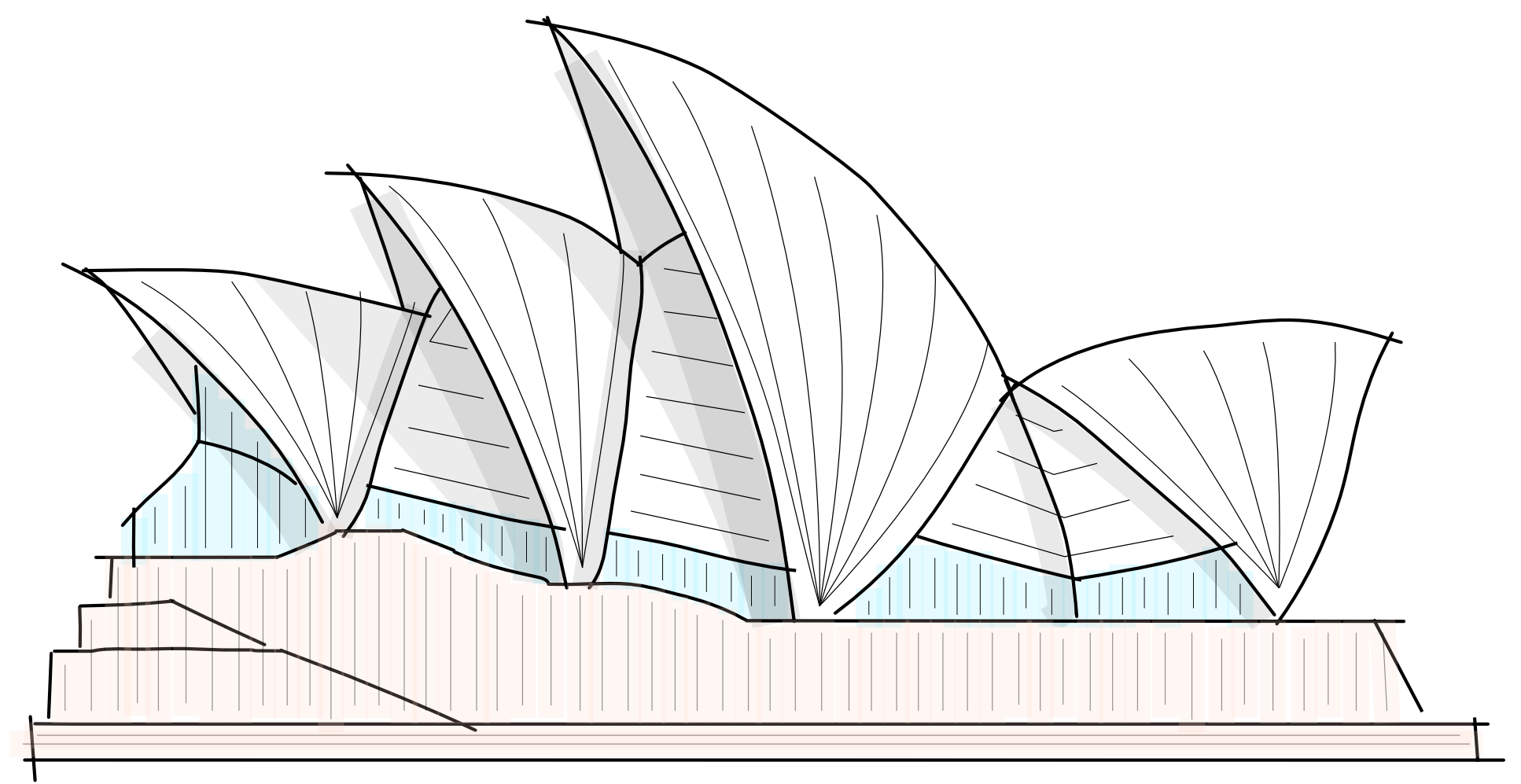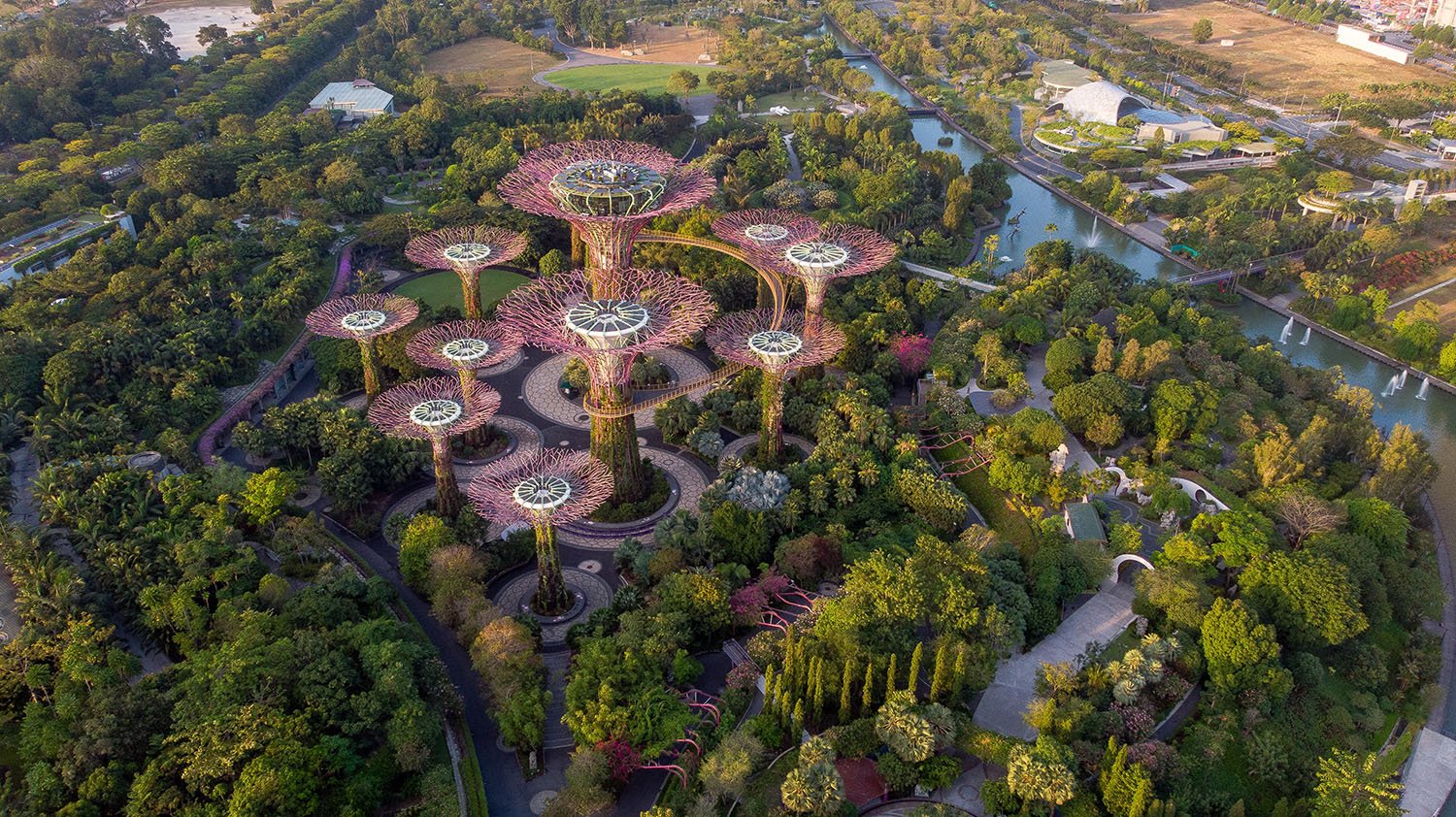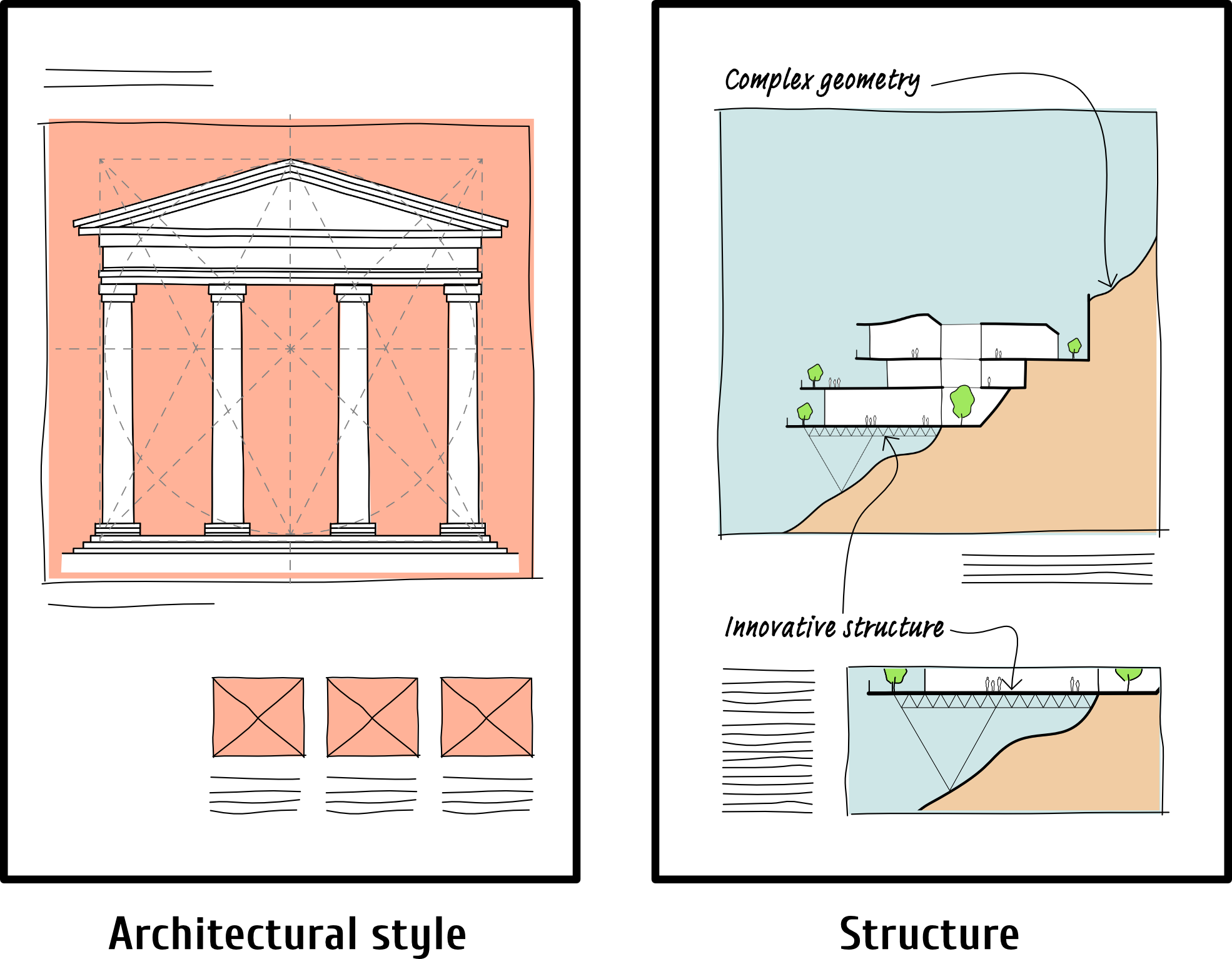The Best Guide to precedent studies in Architecture
What is an architectural precedent study?
Architectural precedents are the study of pre-existing buildings or projects that serve as design inspiration for a new project. A precedent study is usually chosen for its high quality of architecture and innovation.
Introduction to architectural precedent studies
Architectural precedents are fundamental to developing an architectural design, as the knowledge gained from researching existing architecture will serve as inspiration and an example of successful architecture.
Architects define opportunities and constraints for a project based on site analysis, project brief and experience.
By selecting precedent studies that have maximised opportunities or overcome constraints similar to the project at hand, architects make informed design decisions based on the methods of successful existing architecture.
The architecture you choose as a precedent study should be well-researched and have outstanding architectural features you wish to emulate in your architecture project.
To ensure you select the right precedent studies, we have explained the different types of architecture precedent studies and how they can be applied to elevate your design to the next level!
Scroll to the bottom to download our Architecture Precedent Studies Checklist PDF for Free
Summary of the Best Guide to Precedent Studies in Architecture
1. Types of Architectural Precedents
2. Why is using architectural precedents important?
3. Formats of Architectural Precedents
4. How do you Analyse an architectural precedent?
Curating a range of successful precedent studies each with unique qualities that you wish to apply to your own project shows your architecture design concept has been well researched and has depth.
Furthermore, documenting your chosen architectural precedents through images and architectural drawings will help illustrate the evolution of your design. As well as demonstrating your understanding of the current needs and requirements of a place and time while also paying homage to architectural heritage.
In other words, you need architectural precedent studies to create a design concept with depth.
Photo by Sergio Sala
1. Types of Architectural Precedents
1.1 Architectural style
Distinctive characteristics and elements define an architectural style. By studying different architectural styles, you gain knowledge of various design approaches that you can apply to your architectural design. Distinctive characteristics and elements define an architectural style. By studying different architectural styles, you gain knowledge of various design approaches that you can apply to your architectural design.
1.2 Structure
Selecting architectural precedents with unique structures can serve as great inspiration when creating your innovative structure. Analysing existing successful structures will inform you about the best practices and potential challenges.
1.3 Function
Ensuring the functionality of your building is optimised to the full, studying precedents that optimise spatial efficiency and user experience is useful to adapt to your project.
1.4 Material
The selection of materials used in your design is extremely important, as they affect the building's performance, aesthetics and sustainability. Ensure your material selection is an informed one by studying architecture precedent with high-performance materials.
1.5 Historical background
Understanding the historical context of architectural precedent provides you with a valuable understanding of cultural and social influences that have shaped a building and its context. Reflecting the historical background within your design will create a sensitive and considered design.
1.6 Spatial qualities
Rich spatial qualities could well be the most important element of a design, as spaces significantly impact the user experience and perception of architectural spaces. Some design considerations when creating memorable architectural spaces could be; scale, proportion, light, and atmosphere.
1.7 Landscaping
Landscaping plays an important role in the integration of the built environments and natural surroundings. Select precedent studies that enhance the surrounding landscape with vegetation strategies and outdoor amenities as this enriches the architectural experience.
1.8 Form
Form exploration in architecture precedent studies involves massing studies, studying buildings with sculptural qualities that respond to their surroundings with inform your initial design decisions in regards to massing.
1.9 Context
Contextual analysis in precedent studies involves examining contextual factors such as urban fabric, historical landmarks, and community dynamics. Using contextual precedent studies with site analysis will grant you the tools to devise responsive design strategies that resonate with the surrounding context and local identity.
1.10 Occupation
Traditionally the occupation of a building has been a driving factor in the design. However, it is becoming increasingly important that a building design has flexible and adaptable spaces. Allowing for future uses.
1.11 Sustainability
Sustainability is a central concern when selecting architecture precedent studies, with a focus on environmentally responsible design, energy efficiency, and responsiveness to climate change. By studying sustainable design concepts and principles architects can design environmentally responsible designs optimising passive strategies and renewable technologies.
Photo by Denys Nevozhai
2. Why is using architectural precedents important?
Architectural precedents can be a powerful tool for designers, helping them to create innovative and quality designs that are grounded in the foundations of previous work.
To provide a source of important inspiration. Discovering new architectural designs from previous buildings allows you to incorporate their strengths into your own design concept.
Architecture is steeped in tradition. Precedent examples can help establish a sense of tradition in your architectural design. Examples of an architectural language that has a sense of tradition could be a reflection of a place's cultural or historical architecture.
Saving time and costs. Designing is a lengthy process, learning from a well researched number of architectural precedents will allow you to design efficiently, make decisive decisions and have a clear direction.
An architectural precedent can ensure the quality of your design concept as it is used as a reference point.
An architecture precedent study can help solve problems and explain the thought process of your architectural project.
An architecture precedent study can aid your design process from concept to final design.
Photo by Ricardo Gomez Angel
3. Formats of Architectural Precedents
The most common types of architectural precedents are images, drawings, models and even material swatches.
What type of architecture precedent study you have chosen will depend on the precedent's purpose. You may have a selection of drawing styles you want to emulate. Or a detail section that may serve as an example to reference the construction method of your architectural structure. There could be a design problem you need to overcome and there are example solutions in similar buildings.
By referencing different precedents you can weave a combination of concepts into your design to create new ideas.
Photo by Veronica Reverse
4. How do you Analyse an architectural precedent?
Identify what architectural elements you need to develop in your project and select suitable precedents for their corresponding attributes. For example the attributes bullet pointed above.
Learn the spatial qualities of your precedent examples by analysing the floor plans, sections and elevations. Analyse the relationships between different spaces, circulation, structure and hierarchy and define what makes them successful and apply these qualities to your own design concept.
4.1 Study the details of a particular project:
Observe the details of a building, such as the materials, construction, texture, and finishes, and how they contribute to the overall design.
4.2 Consider the context:
Examine how the building fits into its surroundings, including the urban fabric, landscape, climate, and cultural and historical context.
4.3 Compare and contrast precedent examples:
Compare the architectural precedent with other similar or contrasting buildings, in terms of style, materials, function, and context, to gain a deeper understanding of its merits and drawbacks.
Photo by CHUTTERSNAP
Conclusion
Architectural precedents are an essential aspect of the design process in architecture university and professional practice.
The architectural precedents you select should address various important aspects of the design process. Analysing the strengths and weaknesses of these aspects in other designs will increase your architectural knowledge and creativity leading to a more comprehensive and methodic design.









